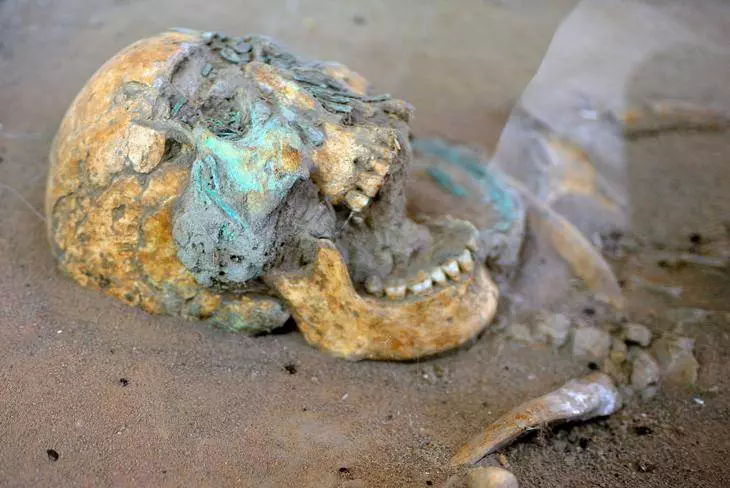
Whether you come for the skeletons dating back hundreds of thousands of years or excavations of an ancient community, there are millennia of history on display. Excavated in 1983 and 1984 as the second-oldest archaeological site in Thailand (but not completed until 1991), the site was looted in 1982, yet still described as a ‘successful development’ project. It won a Pacific Asia Travel Association (PATA) Gold Award in 1994 and an ASEAN Tourism Association (ASEANTA) award in 1996. To be honest, it doesn’t seem to have seen much ‘development’ since then — you’ll likely pass right by several unrestored traditional houses on your way to the museum.
In any case, the museum ends up being a bit tame — some old pottery, the skeleton you see above, and a few fans. English explanations are around, but it ended up being a prelude we breezed through to get to the good stuff. With apologies to the communities that lived for centuries some thousands of years old, the displays feel a little dated.

The good news: the museum has plenty of English, open doors, and three excavation pits scattered around the area. Also, a protip — there’s a footpath heading west from the museum that serves as a shortcut to the other two pits. No need to take the long path towards the river and around.

Excavation pit #1 comes complete with dozens of burials and pots in one L-shaped area. The digging was done from January to May in 1991, and the settlement dates back to 1,000 B.C.

It kinda reminds me of a game of 3-D Tetris.

A couple of skeletons can be easily seen at the same level, nearby some explanations of the various burial phases.

Excavation pit #2 — a single skeleton is the only thing you’ll see easily, and there wasn’t much else to be discovered in the 4.5 meter deep pit. It’s a fine place to take shelter from the oppressive sun or heat, though.

Excavation pit #3, complete with about 10 skeletons (all facing the east) and plenty of pots.

This pit wins the award for the best defined skeletons, along with pottery smashed by their feet.
It’s out of the way, weird, but a little boring personally. It’s free, and there are skeletons — if you’re already heading to Nakhon Ratchasima, it’s worth stopping by — but only if you have your own wheels.
Name: Ban Prasat Archeological Site (AKA Ban Prasat Prehistoric Site)
Address: Moo 7, Prasat Rd. Tambon Than Prasat, Amphoe Non Sung, Chang Wat, Nakhon Ratchasima, 30420 (GPS: 15.245611, 102.371037)
Directions: From Nakhon Ratchasima, get some wheels and head northeast along route 2. It’s about 40 kilometers, but it’s a straight shot up the highway. After the 40 kilometers, start looking for an archway with the English words “Archaelogical Site Banprasat”. Turn left through it, then go about 1.5 km. As you approach the fork, bear left and park around the museum.
Hours: for the museum, 8am-6pm everyday — for the excavation pits, open 24/7
Admission: free (donations appreciated)
Phone: 044–213–030


